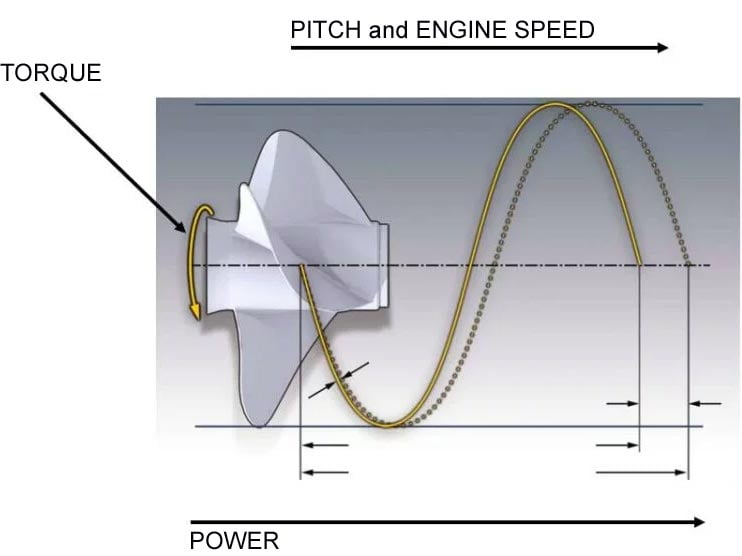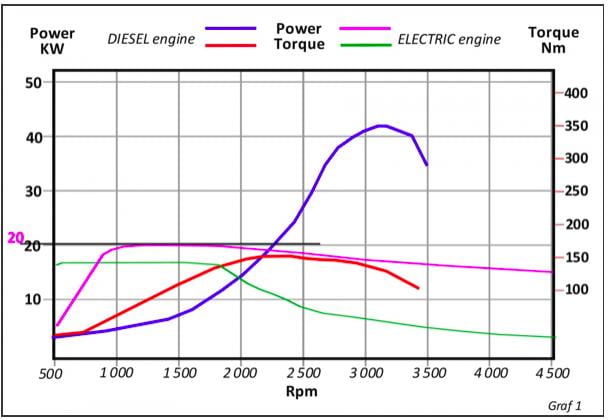1/ 1KW = 1,34 CV HP ?
It is the traditional kilowatt (kW) conversion to English horsepower = CV HP.
It would be almost 2 concerning the power and 3 for the torque and here is why :
The norm of power is normally the watt in most of its applications. In the nautical world, we have become used to talking in Horsepower for the conversion 1KW= 1.34 HP from the analogy with the vehicles.
But we are not talking about the same thing!
The powers communicated by the manufacturers of thermal engines are :
- At maximum engine speed (which is not recommended to reach) if you stay at 80% of maximum speed considered as the maximum usable, we already lose more than 30%.
- In the crankshaft (the losses due to the transmission, alternator, inverter, the different pumps are not deducted) + 10% besides the loss of sail drive.
At the end, we only have 60% of the indicated power available.
The power of an electric motor is indicated by its consumption in kW, yet the efficiency of a good electric motor is superior to 90%. For 1 kW of power, we actually have 900 watts available at the propeller’s shaft.
Losses due to transmission :
Many boats today have Sail Drive. The electric motor can be installed vertically, which eliminates the need for 90° gear drive; which could cause mechanical problems and loss of efficiency due to friction.
OCEANVOLT bases have also been optimized to reduce the weight and reduce sound pollution hitherto imperceptible with a Diesel engine.
Note that electric motors do not need a reverser, which allows you to quickly switch from reverse to forward while limiting mechanical losses.
2/ It’s not the power that makes the propeller turn, but the torque !
Power is the product of torque and the rotational speed.
A torquey motor that runs smoothly will be better to move heavy loads slowly (e.g. trucks) while a powerful motor will be better to go fast (ex. racing cars).
A boat therefore needs more torque than power.

Electric/Thermal
An electric motor has an immediate torque from the first turns, while a thermal engine needs to reach more than 60% of the maximum speed to have the maximum torque.
An electric motor has a more important torque that allows it to move bigger propellers and with more pitch.

When power in kW is equivalent to the one of the thermal engine we can say that :
You can reach maximum power and torque very fast with an electric motor.
You have to reach 2200 rpm in order to reach maximum torque in a Diesel engine.
In conclusion, if we want to make a simple comparison, we could say that :
- 1 kW corresponds to 2 CV concerning the power
- 1 kW corresponds to 3 CV concerning the torque
Our offers are made depending on the characteristics of the boat which allows us to calculate the necessary power to make the boat move forward (deducting all the losses including those of the propeller)
Find our electric motorization solutions according to your boat:

